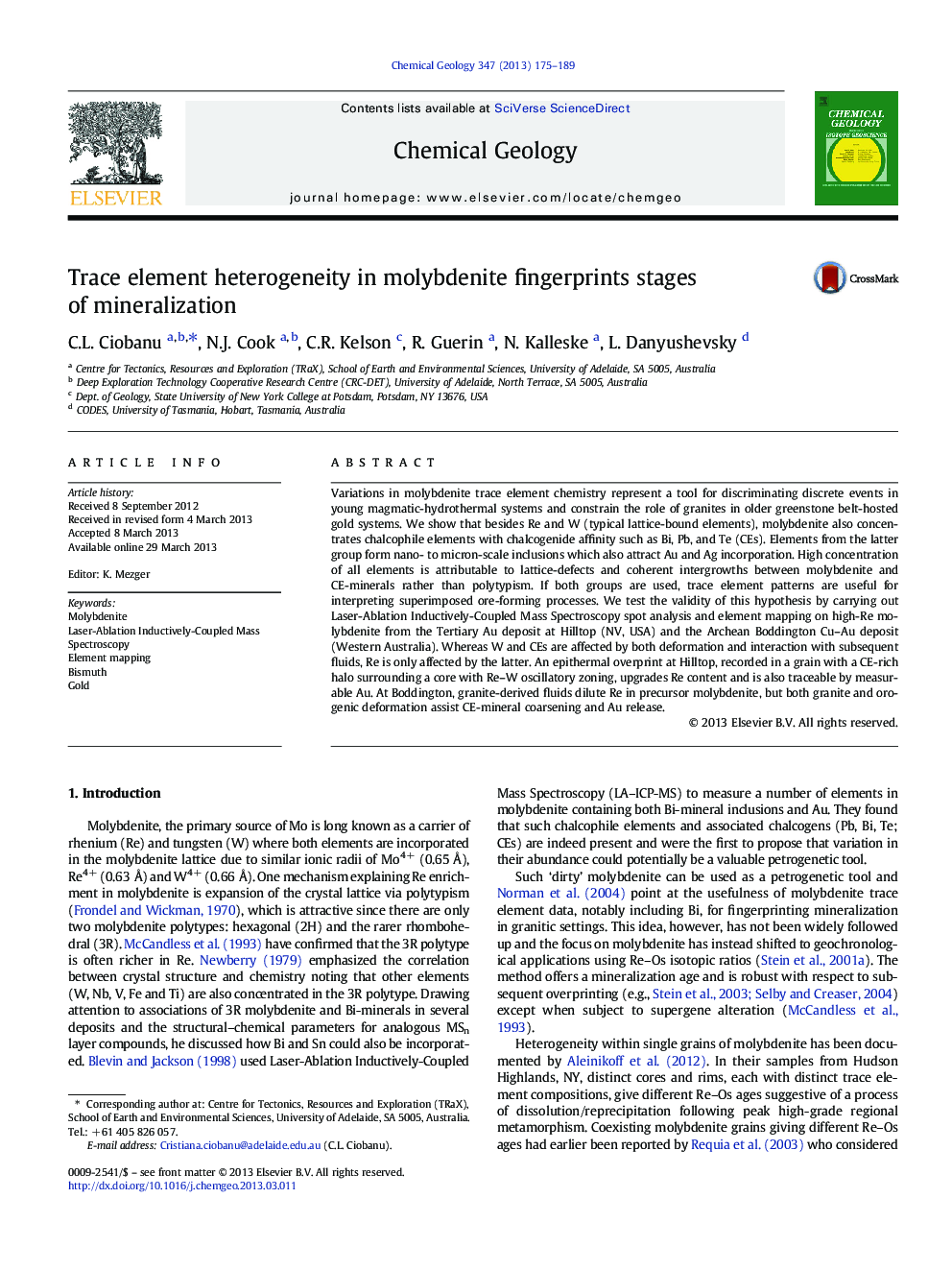| کد مقاله | کد نشریه | سال انتشار | مقاله انگلیسی | نسخه تمام متن |
|---|---|---|---|---|
| 6436968 | 1637621 | 2013 | 15 صفحه PDF | دانلود رایگان |
- Molybdenite carries significant concentrations of chalcophile elements (Bi, Pb, Te).
- Intragrain heterogeneity reflects multiple stages of growth.
- Trace element chemistry of molybdenite is valuable for petrogenetic interpretation.
- Molybdenite containing chalcophile elements can be an attractor for gold.
Variations in molybdenite trace element chemistry represent a tool for discriminating discrete events in young magmatic-hydrothermal systems and constrain the role of granites in older greenstone belt-hosted gold systems. We show that besides Re and W (typical lattice-bound elements), molybdenite also concentrates chalcophile elements with chalcogenide affinity such as Bi, Pb, and Te (CEs). Elements from the latter group form nano- to micron-scale inclusions which also attract Au and Ag incorporation. High concentration of all elements is attributable to lattice-defects and coherent intergrowths between molybdenite and CE-minerals rather than polytypism. If both groups are used, trace element patterns are useful for interpreting superimposed ore-forming processes. We test the validity of this hypothesis by carrying out Laser-Ablation Inductively-Coupled Mass Spectroscopy spot analysis and element mapping on high-Re molybdenite from the Tertiary Au deposit at Hilltop (NV, USA) and the Archean Boddington Cu-Au deposit (Western Australia). Whereas W and CEs are affected by both deformation and interaction with subsequent fluids, Re is only affected by the latter. An epithermal overprint at Hilltop, recorded in a grain with a CE-rich halo surrounding a core with Re-W oscillatory zoning, upgrades Re content and is also traceable by measurable Au. At Boddington, granite-derived fluids dilute Re in precursor molybdenite, but both granite and orogenic deformation assist CE-mineral coarsening and Au release.
Journal: Chemical Geology - Volume 347, 6 June 2013, Pages 175-189
